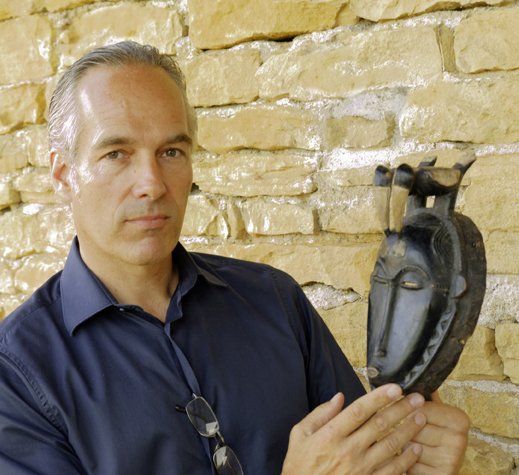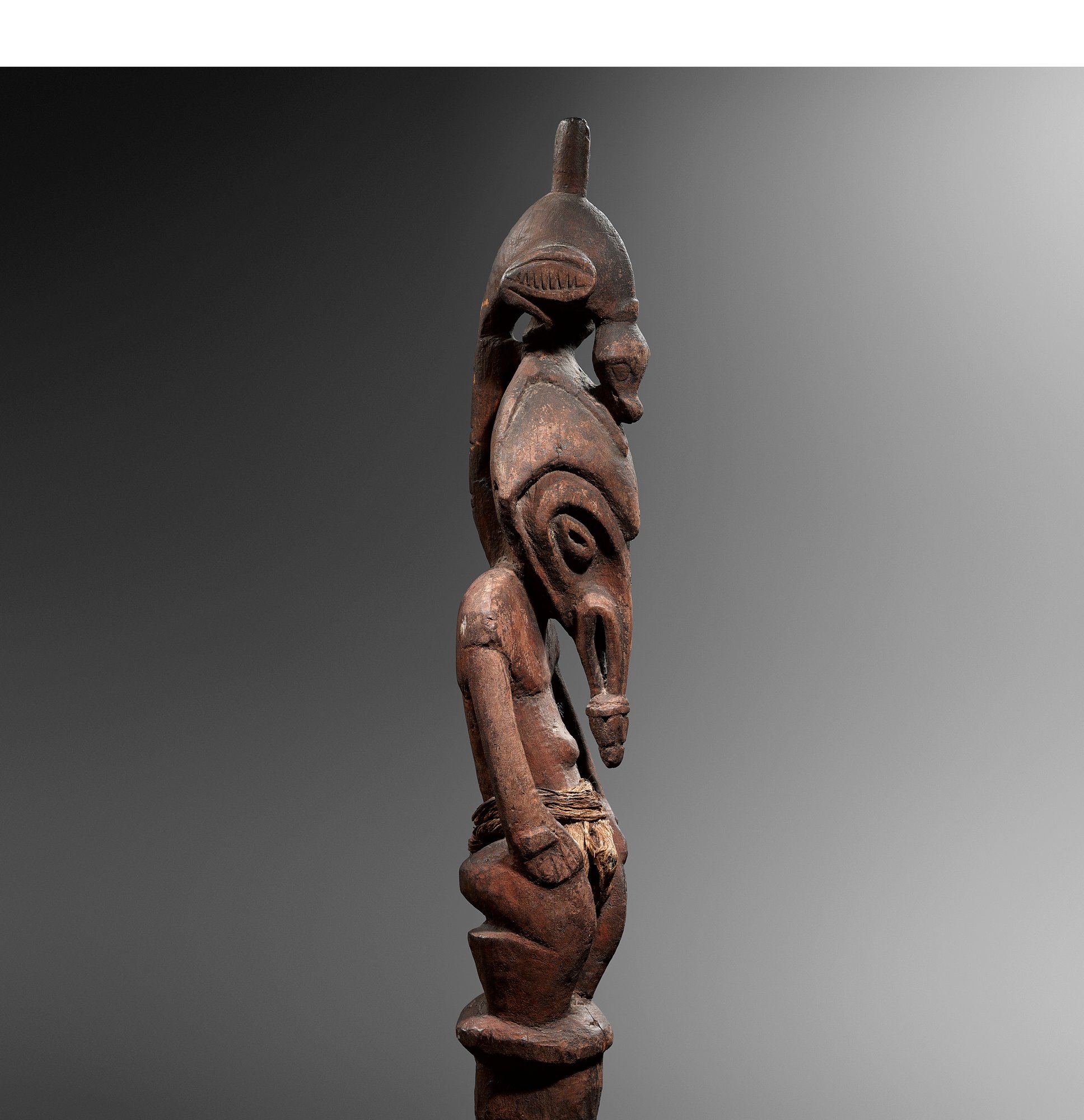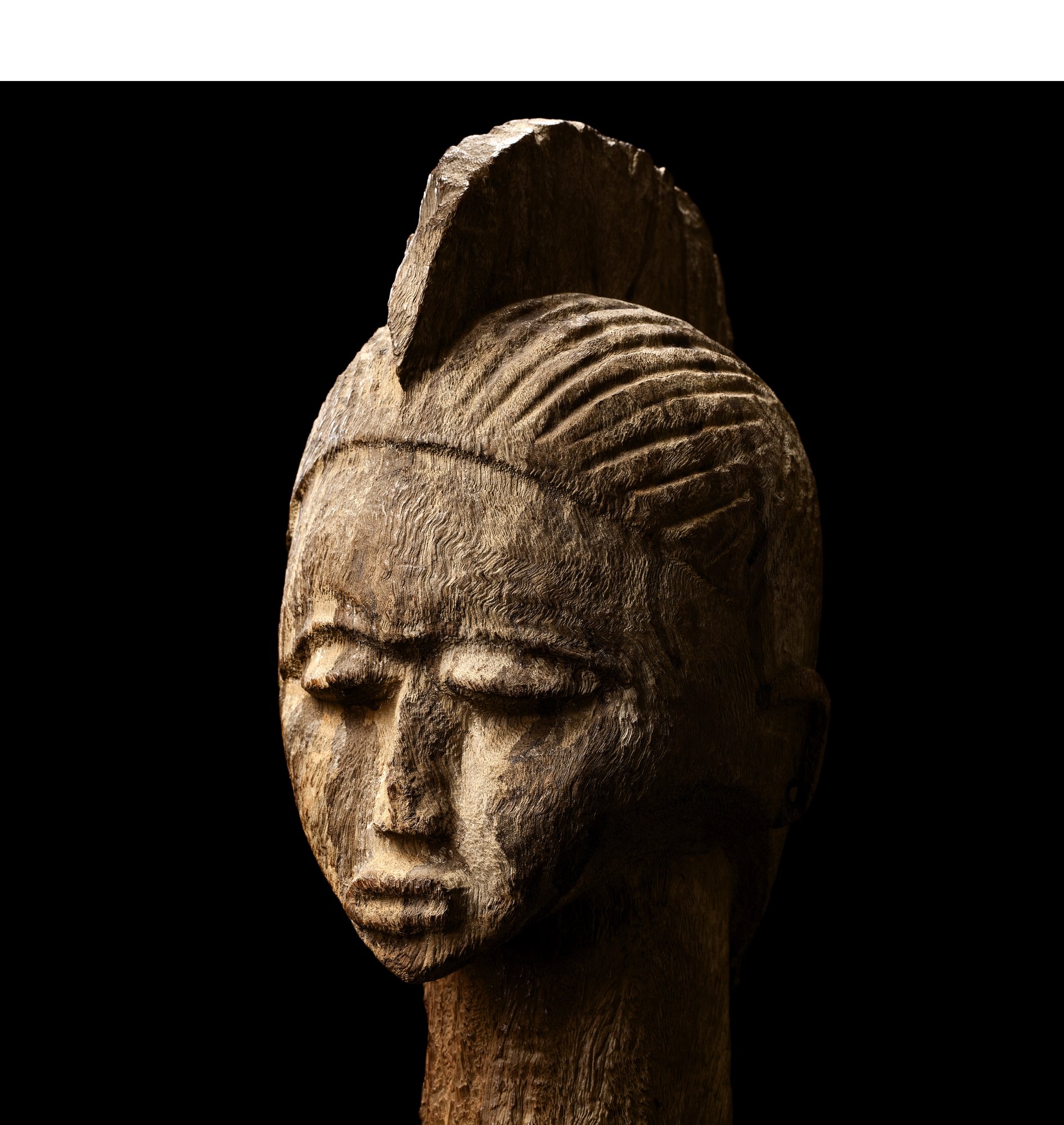Tribal Art, Adrian Schlag Style
Paris 3 September 2019

With over twenty years experience in African and Oceanian tribal art, Adrian Schlag now divides his time between Brussels ; where he opened a gallery on the Rue des Minimes in the late 1990s; and Ibiza, where he lives in the middle of nature for part of the year when not visiting his clients in Europe and the United States.
On the heels of Bruneaf (Brussels Non European Art Fair) in June, this renown dealer and member of the Royal Chamber of Antique Dealers of Belgium and the Belgium Chamber of Art Experts, will participate in the 18th edition of Parcours des Mondes, Paris 10-15 September, a must go-to for primitive art lovers.
Archaic pieces can still be found
Schlag’s gallery is located at the Bouquinerie de L’Institut in the fine arts district of Saint-Germain-des-Près. A highlight of the 15 pieces presented is a 67 cm wooden statuette representing an ancestral figure of the Septik-Ramu tradition (Papua New Guinea), formerly part of Gisela and Heinrich Wellmann’s collection which was acquired in Bremen between 1923 and 1978. This figure was used for the “yam” rituel and is characteristic of Adrian Schlag’s collection criteria focusing on figures and masks created before any contact with Europeans This has led him to include sculpture fragments in his collection. Tribal pieces underwent a transformation after the local people came into contact with European culture. “The style obviously changed due to European influences. One can see this akin to the evolution of a child whose creation and representation of the world changes once he enters school. The archaic pieces can still be found, but are increasingly rare due to market trends favoring masters’ signatures and attribution to a specific school or workshop in the Congo or Ivory Coast. This trend, which does not reflect my taste, is confirmed by auction results. With a bit of luck, I manage to find pieces that correspond to my tastes and those of my collectors; at prices that are not too exorbitant.”

Meeting with Helmut Zake
Born in Würzburg Bavaria, after studying economics and administration, Adrian Schlag joined a gallery in Mannheim specialising in contemporary Eskimo art in the late 1980’s. This led him to Canada where he edited a book based on Lucassie Tookalook’s engraving. He met Dr Hans Himmelheber at the gallery, an ethnologist and pioneer in primitive arts in Germany. Dr Himmelheber introduced him to Helmut Zake who became a close friend. “It was Zake, a great collector and at the time leader of the Friends of Africa Art group in Heidleberg who introduced me to tribal art, who gave me the virus,” says the man who regularly attends bimonthly meetings of this circle of some 300 collectors and participates in the preparation of exhibitions, catalogues and other museum work.
“Tribal art has something magic, exotic obviously, but most of all, a force, a presence that I felt immediately in front of certain pieces, that which I had never felt looking at contemporary art.” In 1995 Adrian Schlag opened his first gallery in Cologne. He has frequently collaborated with the dealer and “adventurer” Philippe Guimiot, specifically in art fairs in Munich, Cologne and Geneva. Like Guimiot, Schlag considers that “a good dealer cannot be a collector himself”, even if he admits that he has had difficulty letting go of some of his pieces, such as a Senufo maternity of nearly 75 cm, or an abstract Oceanic sculpture which have illustrated several catalogues and reference works in the field of “primitivism”.

Emotional charge
“These objects have a soul, just as a piece of furniture that has been much used, or a house where people have lived for a long time have souls,” states the dealer. “But as they are religious objects, materials used in spiritual rituals, their energy is bigger, the emotional charge they release is even stronger.” To conclude: “The risk, in my profession, when taste has matured over years of contact with such objects, is to find yourself alone with them…”